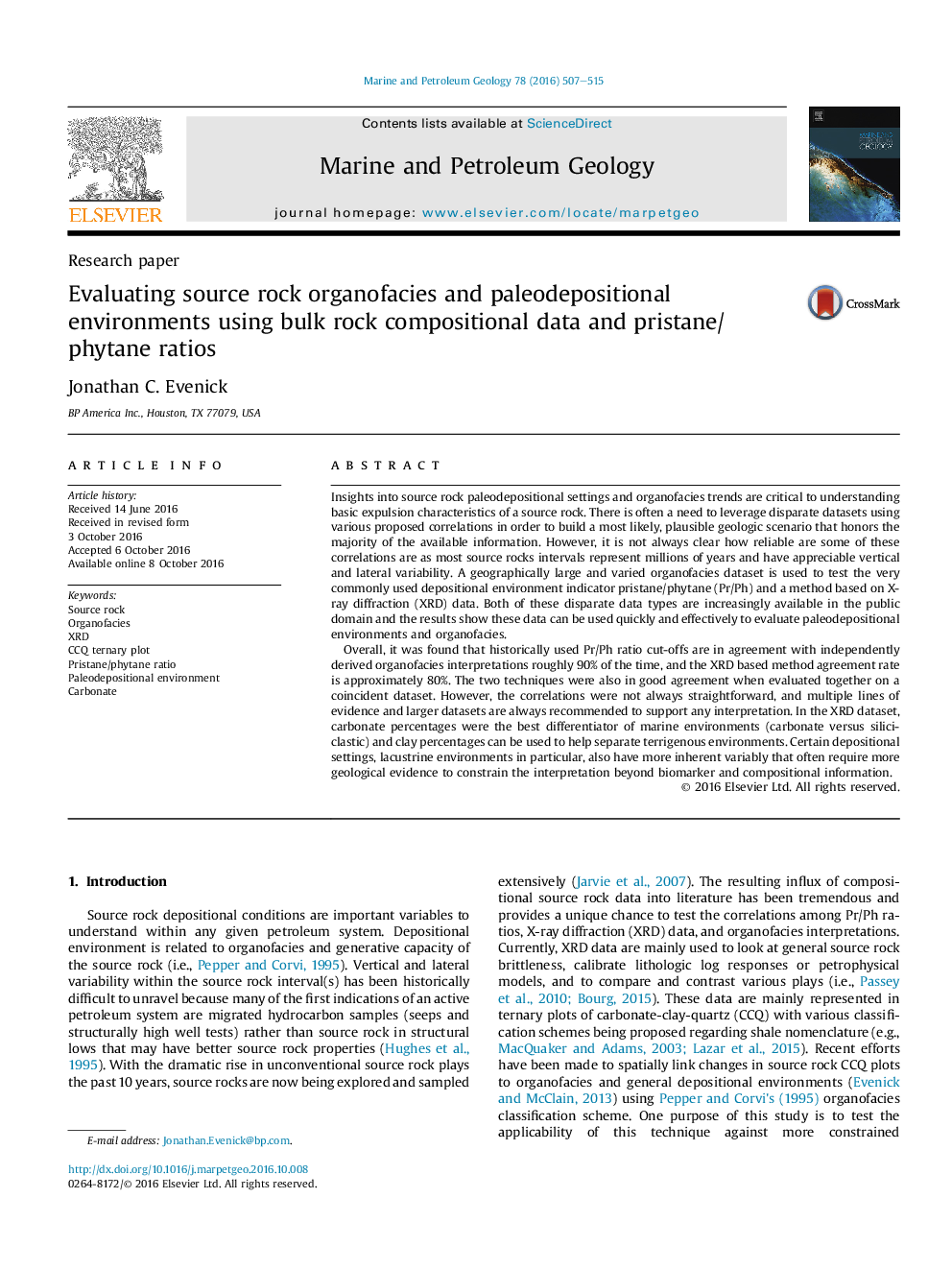| کد مقاله | کد نشریه | سال انتشار | مقاله انگلیسی | نسخه تمام متن |
|---|---|---|---|---|
| 6434408 | 1637149 | 2016 | 9 صفحه PDF | دانلود رایگان |
- Pristane/phytane ratios are a robust indicator of depositional environment.
- XRD data also are a good indicator of source rock organofacies.
- Carbonate is the strongest organofacies differentiator within CCQ ternary plots.
- Source rocks have appreciable vertical and lateral compositional variability.
- Multiple lines of evidence are always recommended to differentiate organofacies.
Insights into source rock paleodepositional settings and organofacies trends are critical to understanding basic expulsion characteristics of a source rock. There is often a need to leverage disparate datasets using various proposed correlations in order to build a most likely, plausible geologic scenario that honors the majority of the available information. However, it is not always clear how reliable are some of these correlations are as most source rocks intervals represent millions of years and have appreciable vertical and lateral variability. A geographically large and varied organofacies dataset is used to test the very commonly used depositional environment indicator pristane/phytane (Pr/Ph) and a method based on X-ray diffraction (XRD) data. Both of these disparate data types are increasingly available in the public domain and the results show these data can be used quickly and effectively to evaluate paleodepositional environments and organofacies.Overall, it was found that historically used Pr/Ph ratio cut-offs are in agreement with independently derived organofacies interpretations roughly 90% of the time, and the XRD based method agreement rate is approximately 80%. The two techniques were also in good agreement when evaluated together on a coincident dataset. However, the correlations were not always straightforward, and multiple lines of evidence and larger datasets are always recommended to support any interpretation. In the XRD dataset, carbonate percentages were the best differentiator of marine environments (carbonate versus siliciclastic) and clay percentages can be used to help separate terrigenous environments. Certain depositional settings, lacustrine environments in particular, also have more inherent variably that often require more geological evidence to constrain the interpretation beyond biomarker and compositional information.
Journal: Marine and Petroleum Geology - Volume 78, December 2016, Pages 507-515
